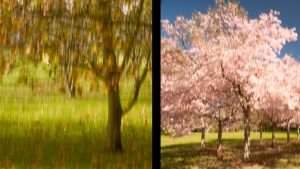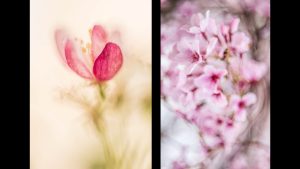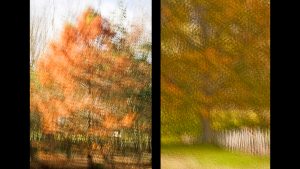Capturing the Magic of October: An Impressionist Photography Guide
October is a month when light itself seems to take on a painter’s brush. The sun lingers lower in the sky, creating longer shadows and stretching the golden hour into a lingering glow. In the Northern Hemisphere, this translates into mornings filled with misty veils and evenings bathed in warm amber tones that turn woodlands into fiery tapestries. In the Southern Hemisphere, the gentle sun of early spring creates a different kind of magic—soft, diffused illumination that brings out the translucency of blossoms, tender leaves, and fresh growth.
This shift in light is not just a technical condition—it’s an invitation. October offers photographers an opportunity to move beyond documenting what they see and instead capture how the world feels in transition. The changing light encourages us to look for fleeting moments: the shimmer of dew on a petal, the dance of falling leaves in backlight, or the way morning haze transforms ordinary paths into dreamlike corridors.
Techniques for Impressionist October Photography
Intentional Camera Movement (ICM)
October’s colours and textures respond beautifully to ICM. Use slow shutter speeds (1/10 to 2 seconds) and move your camera in ways that echo the energy of the scene. A vertical sweep through a forest accentuates the rise of trees, while a gentle horizontal pan across wildflower fields or autumn paths creates a flowing rhythm. Try circular or diagonal movements for a more whimsical effect, and let your body’s rhythm guide the motion—almost like painting with the camera.
Soft Focus and Shallow Depth of Field
October often brings atmospheric conditions—fog, drizzle, and the delicate haze of new spring growth—that soften the world naturally. By shooting wide open (f/1.8–f/2.8), you can merge these effects with blurred backgrounds, turning colours into velvety washes that cradle your subject. This technique works beautifully for blossoms against glowing skies or leaves against misty backdrops.
Multiple Exposures
Layer October’s elements to mirror the impressionists’ brushwork. Combine images of reflections in puddles with leaves above, overlay a sharp blossom with a blurred version of itself, or stack textures like bark, petals, and sky to create layered, dreamlike compositions. This approach lets you tell stories about change, growth, and impermanence in a single frame.
What to Photograph
For Autumn Explorers:
Seek out woodlands where different species of trees create a symphony of colour. Visit lakes at dawn to capture the interplay of mist and reflection. Wander rainy city streets, where wet pavements double the drama by reflecting golden lights. Look for fallen leaves swirling in puddles or caught mid-air in the breeze—moments that embody transience.
(See also https://evapolak.com/wp/welcome-october-tips-for-capturing-autumns-magic/)
For Spring Wanderers:
Venture into orchards heavy with blossom, or wildflower fields where colour carpets the land. Backlit petals become translucent jewels in morning sun, while new shoots and unfurling leaves offer tender subjects for close-up abstraction. Gardens in October are alive with subtle drama—capture them before the fleeting freshness passes.
(See also https://evapolak.com/wp/spring-awakening-through-the-lens/)
Practical Tips
-
Embrace Overcast Days: Soft skies eliminate harsh shadows, saturate colours, and create perfect painterly conditions.
-
Seek Weather Drama: Rain, mist, drizzle, and even wind are allies, not obstacles. They soften, blur, and transform everyday subjects into impressionist scenes.
-
Chase Ephemeral Moments: October is transitional by nature. Flowers bloom quickly, leaves fall suddenly, and weather shifts in minutes. Stay flexible and open to surprises.
-
Experiment Boldly: Try new movements, multiple exposures, or unconventional angles. October rewards playfulness.
Final Thought
October’s gift to impressionist photographers is its very impermanence. The season—whether it’s slipping into rest or waking into renewal—reminds us that beauty often lies in the fleeting and the fragile. Don’t just photograph what you see. Photograph what the changing light makes you feel.



